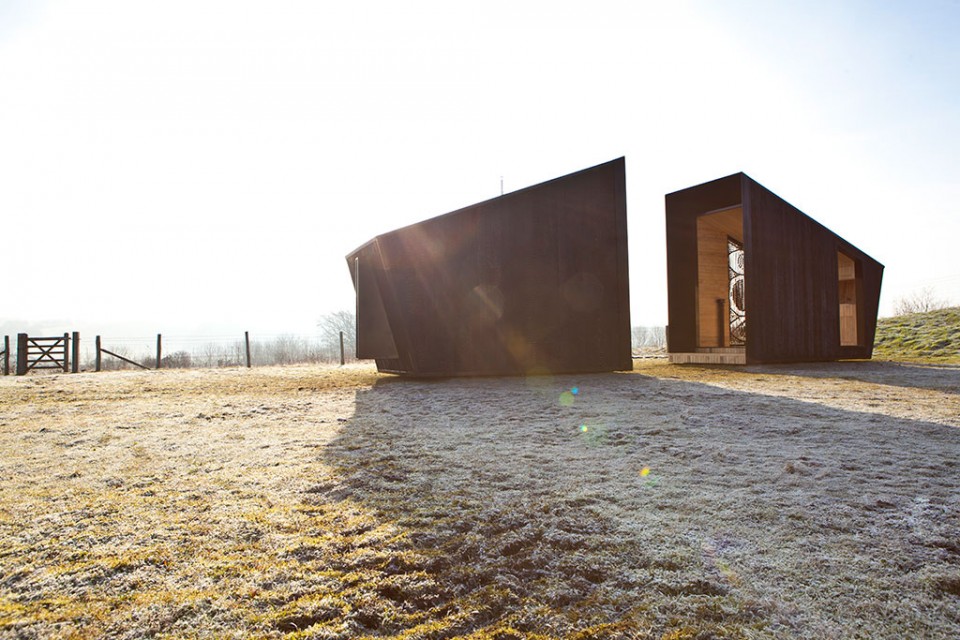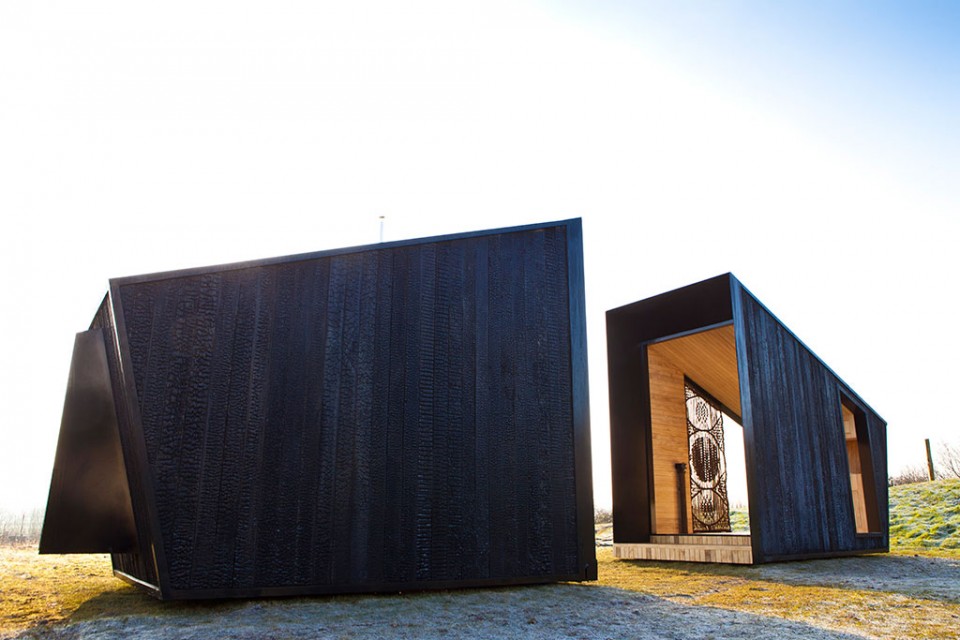Over the next two years, thanks to an organisation called SPUD, we will be given the rare opportunity to watch contemporary artists creating their works in ‘The Observatory’.
The public will be able to watch how each of the artists use this unique space to observe, investigate and respond to four special landscapes, whether it be using a canvas, creating sculptures or devising a performance.

The Observatory – Photo by Matthew Dunkinson
SPUD, which is an arts and education organisation based in the New Forest, will officially open The Observatory on Friday 30th January between 2pm – 5pm on the site of the Winchester Science Centre, home of the UK’s largest capacity digital Planetarium. The launch will be attended by professionals, community groups and students, as well as leading artists and art enthusiasts from across the UK. The Observatory has been designed by a young team of architectural graduates based at Feilden Clegg Bradley Studios in London.

The Observatory – Photo by Matthew Dunkinson
Six artists were chosen from over 100 applications from the UK and abroad for the first two locations and will each spend a period of 2 months over the next 12 months at The Observatory, which has been custom built with a unique rotating system that creates the illusion that it is floating above the ground and provides 360 degree views of the landscape.
Principal Associate at SPUD, Phil Smith said: “What a fantastic start to 2015 to bring The Observatory to life here in Winchester. We are confident that the project will be well received and that the selected artists will produce a fascinating variety of work that explores The Observatory and its locations, offering a wide range of ideas and opportunities for the public to see artists at work and gain some new perspectives on familiar places.
“Art is something that shouldn’t be tucked away and hidden and we are hopeful that The Observatory will stimulate both young and old minds to visit more exhibitions and performances and to be inspired by the world around us.”
The Observatory will spend its first six months in the South Downs National Park at Winchester Science Centre and the public will be able to watch and interact with artist Simon Ryder; visual artist and filmmaker Sean Harris; and multi-disciplinary artist Isabella Martin. It will then move in July to Lymington where resident artists include: the creator of large structural installations Katie Surridge; Jilly Morris who uses wide variety of collage and drawing techniques; and artist Alice Angus who often works directly with communities creating works in sculpture, video and textiles.
The Observatory has two structures, The Study and The Workshop, which through their ability to rotate, allow them to act as framing devices for the landscape beyond and encourage the artist and audiences to interact by blurring the boundaries between public and private spaces. The resident artists will be able to orientate The Observatory to take maximum advantage of daylight and vistas,
or to create shelter from the prevailing weather. The Study will provide a private and reflective space for the artists to work, while The Workshop will allow for interaction with the public.
A comprehensive learning and engagement programme will run alongside The Observatory residencies. This will include a breadth of school and community workshops, talks and outreach work with universities, communities and special interest groups.
The two Observatory locations proposed for 2016 will be the River Tamar and the South Dorset Ridgeway. Artists will develop a body of work connected to each location and context, and the work produced will then form part of a showcase in each location.

The Observatory – Photo by Matthew Dunkinson